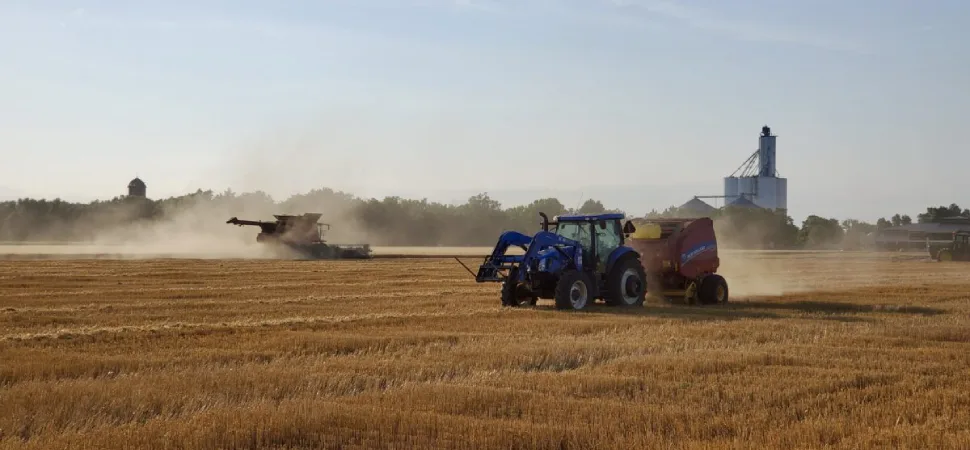In the report CONCITO analyzes the implementation of the Common Agricultural Policy (CAP) 2023-27 reform after the first year of implementation, taking Denmark as a case study. The focus is on the validation of the new reform components, the New Distribution Model (NDM), improved cross-compliance and greening schemes, and their contribution to national and EU climate, biodiversity and environmental goals.
The report also analyzes the economic development of the Danish agricultural sector in 2023 and provides recommendations for possible future agricultural policies in the EU. The aim of this report is to assess the effectiveness of the most important green measures in near real time. Rural development programs have not been analyzed. This is because the expected effects of these funds are of a long-term nature and therefore have not yet been realized.
Impact of the new green elements
The main impact of the first year of the new CAP on climate, biodiversity and the environment in Denmark is mainly related to land allocation. On the positive side, the increase in the amount of land allocated to non-productive elements of the agricultural landscape has led to small reductions in greenhouse gas emissions and nitrogen leakage, as well as increased support for non-native species such as ladybugs, common finches, spiders and hares on agricultural land. However, as this report shows, there are significant shortcomings in the EU Common Agricultural Policy, and in particular in the way the Danish CAP strategic plan is implemented.
One of the main findings is that the improved conditions have not introduced many new requirements for organic farming and therefore have limited additional benefits. Moreover, the implementation of one condition, also known as Good Agriculture and Environment Condition (GAEC) No. 8, which requires that 4 percent of farmland be set aside as "unproductive land," has proven somewhat counterproductive. This is because in some areas it inadvertently encourages logging in semi-natural areas.
The report estimates the following green impacts of the program:
- Climate impacts of 13 million tons of CO e, corresponding to a 1% reduction in total greenhouse gas emissions from the Danish agricultural sector.
- Reduction of nitrogen (N) leaching into the aquatic environment by 1,135-1,848 tons. This corresponds to 2-3% of the total N leached from land to sea in Denmark and 9-14% of the target of 13,000 tons of N by 2027 set in the Water Framework Directive.
- Short-term biodiversity measures are needed, which can have both negative and positive impacts on organisms in the agricultural landscape: the EU Biodiversity Strategy aims for landscapes on EU farmland to become at least 10% more diverse by 2030.

Overall environmental impacts are therefore small and some environmental measures compete with each other.
Simplification of the Common Agricultural Policy
After 2025, the Common Agricultural Policy will undergo a further series of changes following a surprise proposal by the European Commission to increase "flexibility". This proposal would, among other things, significantly reduce the requirements of GAEC 8 to meet the concerns and demands of farmers after the 2023-24 protests. However, the Danish example shows that the introduction of more stringent requirements in GAEC 8 may coincide with changes in the agricultural economy, raising doubts as to whether the more stringent requirements in GAEC 8 should be eliminated.
Limited impact of the implementation of the Danish CAP
The implementation of the new CAP in Denmark has revealed shortcomings in terms of providing effective tools for additional environmental benefits, setting measurable targets and applying appropriate regulations. The New Delivery Model (NDM) sets minimum ambitions at EU level through conditionality, but this has not resulted in significant additional environmental benefits in Denmark.
All environmental programs in Denmark are currently designed as annual programs. However, most of the targets in these programs require permanent changes in agricultural practices and land use. Therefore, annual approaches are unlikely to contribute significantly to long-term environmental benefits and will not help farmers to make long-term investments in more sustainable production systems.
The need for new and innovative solutions
This report emphasizes that there are persistent structural problems in the CAP itself. For example, the lack of environmental objectives, the complexity of implementation, the presence of competing interests and conflicting objectives all further reduce the effectiveness of policy. Therefore, EU policy towards the agricultural sector, both within and outside the CAP, needs innovative solutions.
A more comprehensive and effective EU agricultural policy is needed to address the multiple challenges facing the agricultural sector. The proposed package could include significant reforms to the CAP, such as phasing out direct payments, introducing an agricultural emissions trading scheme (AgETS) and establishing a new fund for sustainable land use and a just transition. It is crucial that these changes are implemented simultaneously and in a coordinated manner to avoid conflicting policy signals, such as pricing greenhouse gas emissions and subsidizing intensive agriculture.




Comments